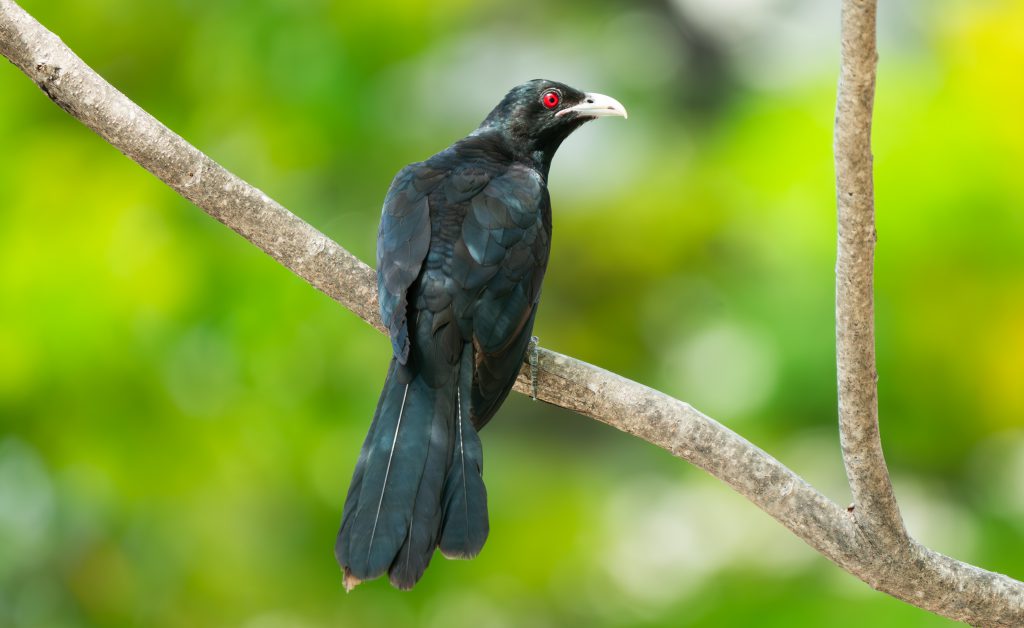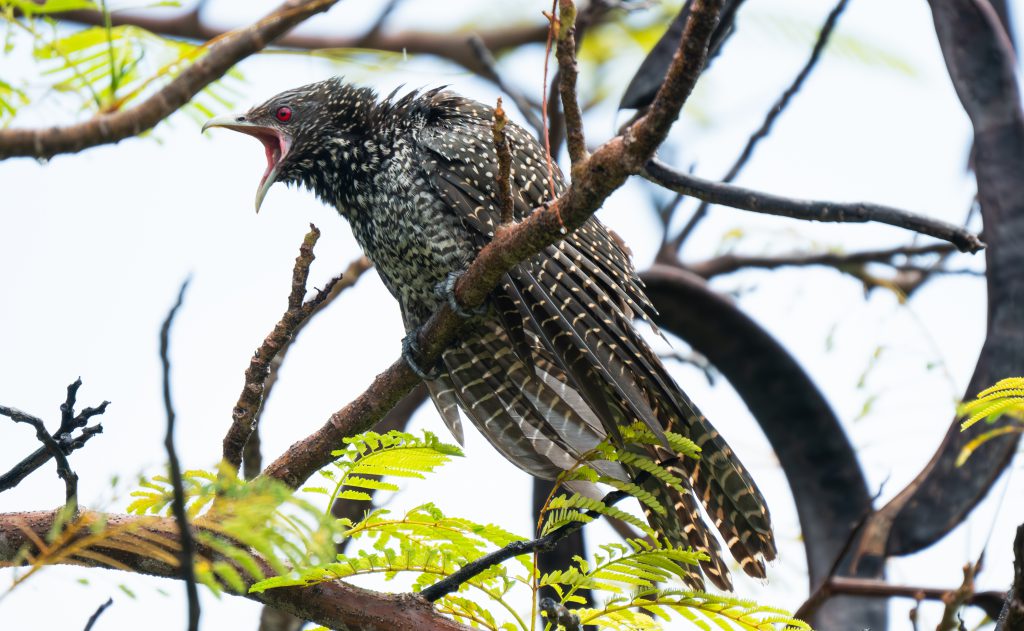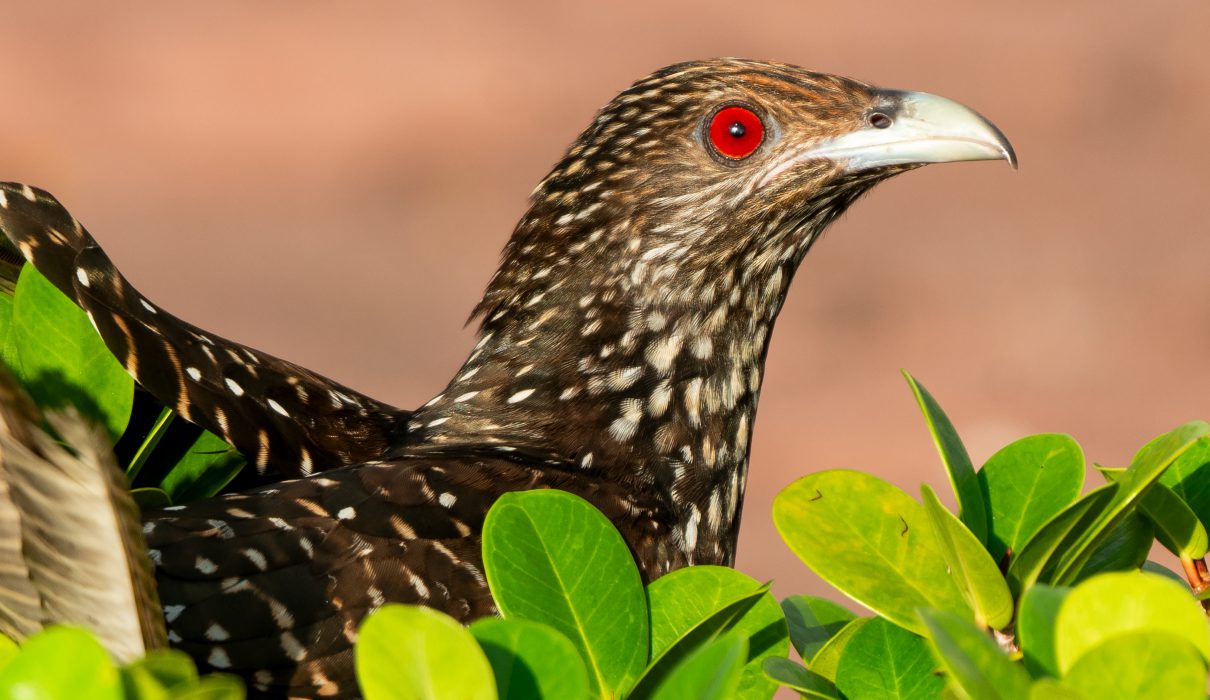In the days of our childhood, the Asian Koel, locally known as “Koveli” in Dhivehi, was a common sight in the Maldives. Often found in the company of crows, this bird, a member of the cuckoo order, Cuculiformes, holds a unique place in our island memories.
Key Details:
- Scientific Name: Eudynamys scolopaceus
- Local Name (Dhivehi): Koveli
- Dhivehi Naming: Female is “Thihthi Koveli,” and male is “Kaalhu Koveli”
Taxonomy: Described by the English naturalist George Edwards in 1747, the Asian Koel found its place in the cuckoo genus Cuculus. Later, it was reclassified into the genus Eudynamys in 1827 by English naturalists Nicholas Vigors and Thomas Horsfield. The name “Eudynamys” combines Greek words for “fine” and “power,” while “scolopaceus” refers to its snipe-like features.
Male Asian Koel

Female Asian Koel

Distribution and Variations: The Asian Koel spans across Maldives, India, South Asian countries, China, and Southeast Asia. Variations exist within its wide range, with several island populations, leading to taxonomic debates. Subspecies include E. s. scolopaceus, E. s. chinensis, E. s. harterti, E. s. malayana, and E. s. mindanensis.
Description: A large cuckoo, the Asian Koel measures 39–46 cm and weighs 190–327 g. Males exhibit glossy bluish-black plumage, crimson irises, and grey legs. Females, brownish with rufous streaks, show distinctive striping on whitish underparts. Young birds resemble males.
Distribution and Habitat: Thriving in light woodlands and cultivation, the Asian Koel is a resident breeder in tropical southern Asia. Its adaptability allowed it to colonize new areas, exemplified by its presence on the volcanic island of Krakatau.
Behaviour: As a brood parasite, the Asian Koel lays eggs in the nests of birds like crows. In the Indian Subcontinent, it’s known to parasitize jungle crows and house crows. The male’s repeated koo-Ooo and the female’s shrill kik-kik-kik… calls are distinctive during the breeding season.
Feeding Habits: Omnivorous in nature, the Asian Koel consumes insects, caterpillars, eggs, and small vertebrates. Adults predominantly feed on fruit, contributing to the dispersal of certain trees. They may defend fruiting trees and regurgitate large seeded fruits.
In Culture: The word “koel” is onomatopoeic, reflecting its distinctive call. Revered in folklore and poetry, the Asian Koel is traditionally esteemed for its song. It holds significance in Sanskrit literature, and its cultural presence extends to being the state bird of the Indian union territory of Puducherry.
These once-popular cagebirds, living up to 14 years in captivity, continue to echo through the memories of our childhood.
References:


